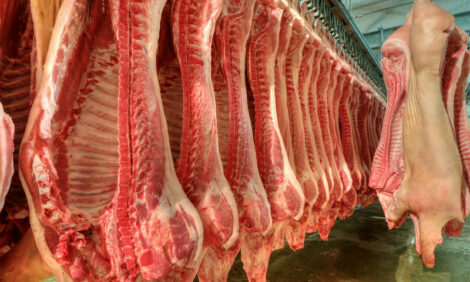



Global Pork Markets Cool Down
GLOBAL - The previously heated international pork markets are showing signs of cooling down, according to Rabobank's fourth-quarter report on the global pork industry.In the report, Rabobank's Food & Agribusiness Research team says that, although the peak of the 2014 porcine epidemic diarrhoea virus (PEDv) outbreak is past, the global pork industry faces another challenge from the Russian import ban affecting EU, US, and Canadian markets, which is resulting in a rapidly changing trade landscape.
Rabobank says that beneficiaries of the ban include Brazil, which has seen a 30 per cent per kilogram price surge, while the EU has seen prices drop by nine per cent with no sign of recovery. Even taking into account the positive impact of declining feed costs on margins, it will be a disappointing year for the EU pork industry, says Rabobank.
"As Russian markets will not open again until July next year, the wildcard next year will be the possible return of PEDv this winter, cutting back available hogs for slaughter in 2015," says analyst Albert Vernooij.
Regional Outlooks
In China, subdued supply and rebounding demand will support market recovery and import growth towards the seasonal high in Q1 2015. In addition, with feed costs likely to decline next year, Chinese hog farmers are expected to finally make money.
In the United States, PEDv-induced surging pork prices where further supported by consumers trading down due to higher beef prices, thereby driving one of the highest margin periods in the industry's history. Producers are looking to increase production in 2015. Risk factor may be the return of PEDv this winter.
The European Union pork industry has experienced a very disappointing Q3, deteriorating from July with the extension of the Russian ban to competing exporters in the U.S. and Canada in combination with pressured consumption. Both consumption levels and export levels will remain under pressure for the remainder of the year.
In Brazil, the third-quarter saw new record pork prices, with exports to Russia seeing 18 per cent volume uplift representing almost 50 per cent of Brazil's pork export value. This might pose a significant risk in the future should the situation normalise. A positive Q4 outlook is expected.
Hog prices fell dramatically in the third quarter in Canada, driven by rising competition for other markets as exports were directed away from Russia - a situation which will likely continue until the ban is lifted. The dark horse for 2015 will be the possible impact of PEDv, despite largely dodging the virus so far.
The pork market in Japan is doing well with consumption stabilising despite surging imports and higher retail price which resulted from the depreciation of the Yen against the US dollar and high priced competing proteins. Resulting high stock will pressure imports in the remainder of 2015.
Mexico experienced the biggest PEDv impact this summer with year over year slaughter numbers down 11.1 per cent, slightly higher than anticipated. Margins will set a record high in 2014 due to declining feed costs and higher hog prices.
In South Korea, a higher-than-expected supply, due to smaller than anticipated levels of PEDv, has resulted in a relatively large hog and wholesale price drop. Prices will remain firm going into 2015.








